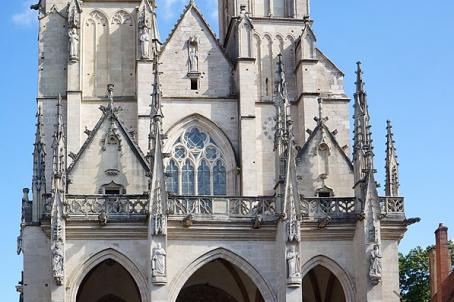Basilica Saint-Andoche
Considered one of the most beautiful testimonies of Romanesque architecture in Burgundy, a recent renovation completed in 2007 highlights this jewel built in the 12th century on the ruins of an abbey founded in the 8th century to protect the relics of the martyrs Saint Andoche, Saint Thyrse and Saint Felix.
About this building
Built in Auxois limestone, the Romanesque basilica was built in a single throw, it offers a total length of 42 meters over a width of 25 meters. It has a façade flanked by two rectangular towers. The one on the right has a single storey and is covered with a four-sided tiled roof. The two-storey left tower was rebuilt in 1760 and is topped by a lead dome dating from the Baroque period. The façade is crowned by a narrow triangular pediment and is pierced by a round archway with three archivolts. Inside, the nave, with a broken barrel vault flanked by two side aisles with groined arches, offers an ensemble of remarkable purity. There are three floors of openings on the sides of this nave. The pillars that support the vault open out into nearly sixty capitals that have remained in place and intact, bearing witness to the finesse of the sculpture of the images of the Middle Ages.





